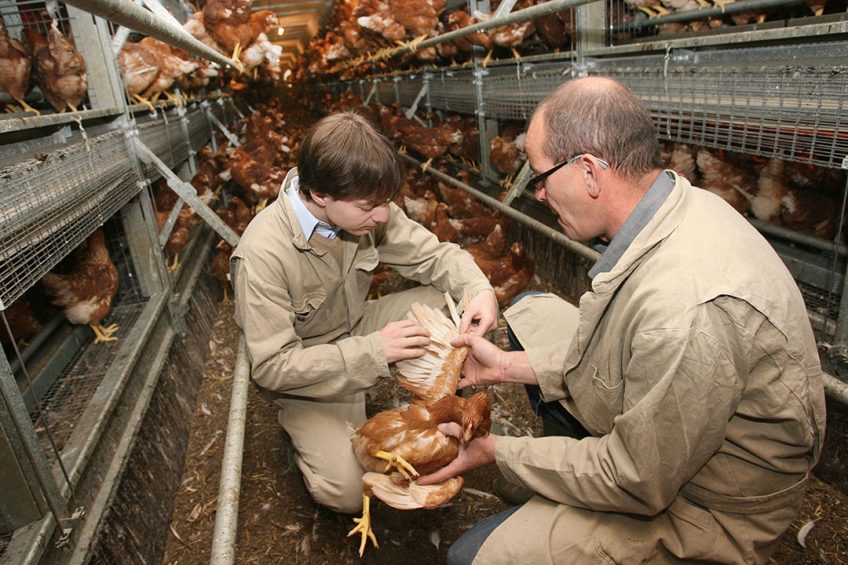Feather analysis to monitor antibiotic usage

Researchers at the Polish national veterinary research institute evaluated feather analysis as a non-invasive alternative to tissue sampling for the surveillance of doxycycline use on poultry farms. It seems that bird exposure to antibiotics is best indicated by testing feathers, as antimicrobials have the potential to accumulate in poultry feathers.
Antibacterials are commonly used in poultry to treat microbial diseases and to ensure the health and welfare of birds. In intensive poultry production medicines are often administered excessively which, in intensive breeding conditions, may result in the potential spread of bacterial infections and the development of resistant bacteria in animals and humans. In EU countries antibiotic use is mandatorily monitored in order to ensure safe food production for consumers. Poultry monitoring programmes test sample materials collected post mortem, such as muscle, liver, skin and fat. Maximum residue levels have been established mainly for antibiotics used in broiler production. No levels have been set for layers.
Accumulation in feathers
The postmortem analysis of antibiotic content as it is currently conducted does not reflect treatment during a chicken’s life. As a result attention has increasingly turned to finding alternative methods to tissue sampling to determine the consequences of the use of (possibly illegal) medication. It seems that bird exposure to antibiotics is best indicated by testing feathers, as antimicrobials have the potential to accumulate in poultry feathers. Feathers used as a high-protein ingredient in feed for poultry and as a source of protein in the diets of many animals, may act as a re-entry path by which antibiotics can get into the human food supply chain. Analysing feathers is regarded as a non-invasive and non-destructive method for the biomonitoring of many substances and has many advantages. Feathers can be collected without harming the animals, transported and stored regardless of the time of year, age and gender of the birds. In previous work the transfer and deposition of antibiotics to feathers focused on the use of enrofloxacin, oxytetracycline, sulfachlorpiridazine, flumequine, and tylosin. Doxycycline is a broad spectrum antibiotic that is currently widely used in the EU. Therefore further study is needed to establish doxycycline displacement to feathers after administration to broiler chickens.

Antibiotic Reduction: Moving away from antibiotics can be challenging and requires a new way of thinking. This special edition explores the latest methods for raising healthy livestock without the use of preventive antibiotics.
Non-invasive
The main goal of this study was to investigate whether feathers offer a suitable alternative non-invasive method to tissue sampling for the detection of doxycycline use in poultry production.
The antibiotic was administered in 3 different ways:
- therapeutically,
- as a spray and
- subtherapeutically.
A validated ultra-high-performance liquid chromatography tandem mass spectrometry method was used for the quantitative determination of doxycycline in the feathers. High concentrations of doxycycline in feathers were detectable for 22 days post treatment in each experimental group, and were much higher than those found in muscle and liver. Large amounts of doxycycline were found to be deposited in the upper part of the feathers in each treatment group. The study results showed that chicken feathers provide a suitable material for the non-invasive surveillance and detection of doxycycline.












